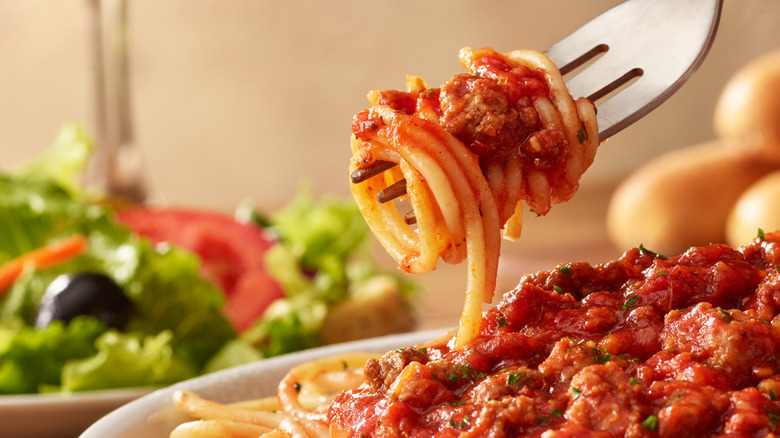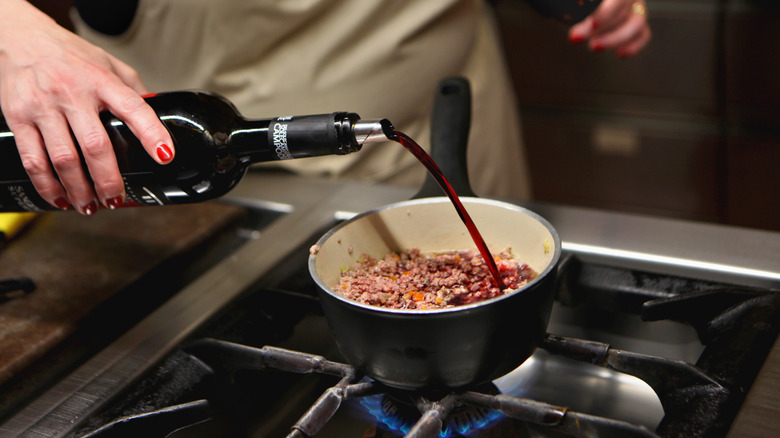The Boozy Ingredient In Olive Garden's Meat Sauce That Amps Up The Flavor
Olive Garden draws in devoted customers with its take on Italian food that draws more inspiration from Italian-American classics than what people eat in Italy. Combining familiar dishes with new creations, such as its Stuffed Ziti Fritta, signature salad, and famous breadsticks (which you can reheat for first-time flavor) has been a winning formula for the casual dining chain. However, one thing Olive Garden does do that's true to traditional Italian cooking is boost the flavor of its meat sauce with wine.
The restaurant's Bolognese-style sauce is made by heating chopped onions, carrots, celery, and garlic in olive oil for a few minutes, then adding ground beef and sausage meat without the casing to the softened aromatics to cook for 10 minutes. That's when red wine is poured in to deglaze the pot, unsticking all the flavorful browned pieces on the bottom. After the wine has reduced, crushed tomatoes, rosemary, and sage are added, and the sauce simmers until it's done.
The meat sauce is used for Olive Garden's Lasagna Fritta appetizer, Lasagna Classico entree, Spaghetti with Meat Sauce, and as an option instead of marinara sauce with Spaghetti with Meatballs and Cheese Ravioli. It's also one of the sauce choices for Create Your Own Pasta, along with marinara, five cheese marinara, creamy mushroom, and the new spicy three-meat sauce that our reviewer called a total flavor bomb. Customers get to choose their pasta and optional toppings as well.
How wine makes meat sauce better
Incorporating wine elevates meat sauce in a few ways, in addition to deglazing the pan. It brings its own taste, which remains as the alcohol evaporates during cooking, while also helping release the flavor of the other ingredients. Wine adds depth, brightness, and acidity, which balances the meat's richness. It also tenderizes the meat, which, like the other ingredients, absorbs some of the wine's flavor.
Olive Garden uses red wine, whose full-bodied flavor is traditionally paired with meat, and Ina Garten's favorite wine for making Bolognese is also a red. But you can also use white wine, which was the choice of Italian food legend Marcella Hazan for her Bolognese. Whether red or white, opt for a dry wine that's not too sweet. Don't use a wine that you don't like enough to drink, and steer clear of anything labeled cooking wine, which often has added salt and preservatives. Leftover wine is perfectly fine, however, and making sauce is a great way to use it up.
The wine has to be added with the meat and other ingredients at the beginning, as Olive Garden does, and be reduced by about half, or its flavor will be too strong. This early introduction to the sauce allows it to release flavor and do its magic as it simmers with the meat and aromatics. If you forget to add the wine at that point, just leave it out. The results won't be good if you pour it into the sauce after you add the tomatoes.


